Quality wise, there are basically 4 different groups of modern motorcycle oils:
- Mineral oils
- Semi synthetic oils
- Synthetic oils
- Fully synthetic oils
This basic grading for oil types is used for both 2 stroke and 4 stroke oils. Mineral oils are the lowest quality and fully synthetic oils are the best quality.
Mineral motorcycle oils…..
Mineral oils are basic spec oils that are made from natural oils. They are generally suitable for commuting, touring bikes and some older bikes.
They are not normally suitable for some modern bikes that require a higher oil spec (especially high temperature, small oil sump bikes) or for most racing and competition use or where engine oil service/change periods might be exceeded (so if your not changing the oil every 4 to 6,000 miles you will be better off using a better quality oil).
Mineral oils are often used to blend most motorcycle workshop oils.
Mineral oils offer the lowest levels of protection but are suitable for many bikes if the oil is being changed regularly.
They can also be used as a ‘running in’ oil in some rebuilt engines (because you do get engine wear with mineral oils, this gives the engine parts a chance to ‘bed in’ together).
How to tell a mineral motorcycle oil from the bottle…
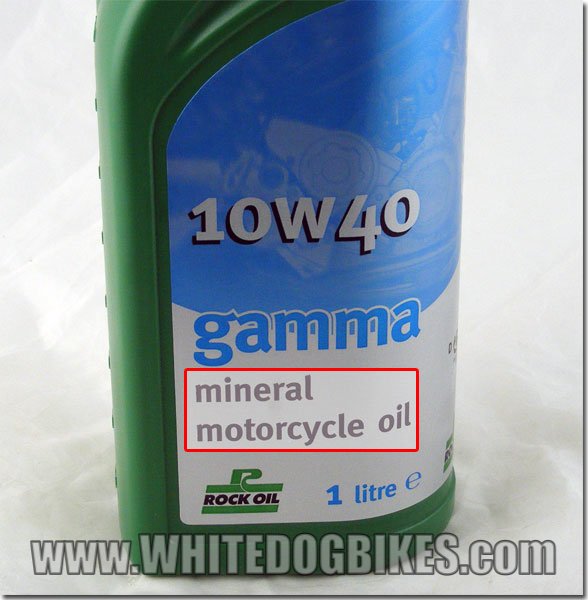
Front view of a bottle of Rock Oil mineral motorcycle oil
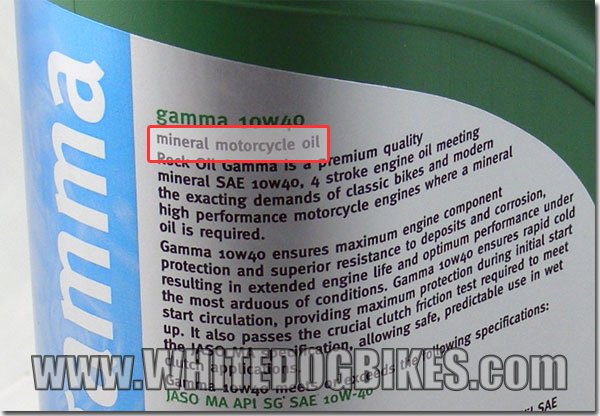
Rear view of a bottle of Rock Oil mineral oil
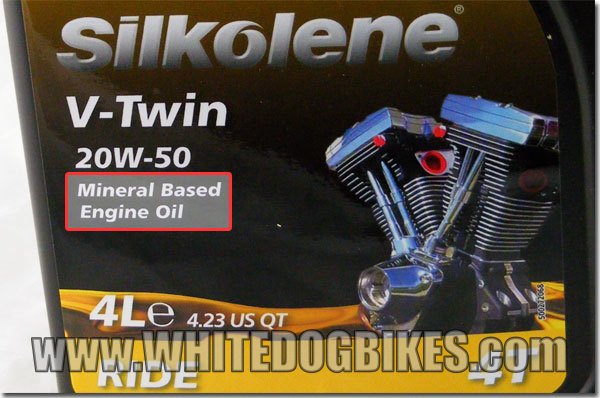
Front view of a bottle of Silkolene mineral oil
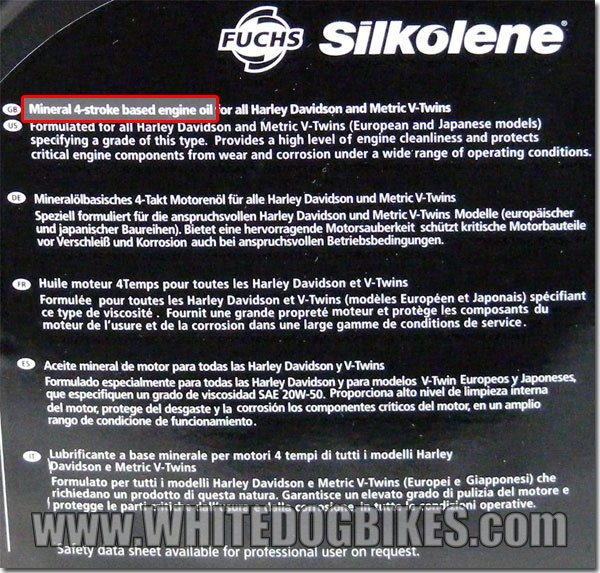
Back view of a bottle of Silkolene mineral bike oil
Semi-synthetic motorcycle oils…..
Semi synthetic motorbike oils are usually blended from Group 3 base oils (group 3 is a lower spec base oil which is made by using a process called ‘hydro-cracking’ to convert natural oil into suitable base oils). Some better quality semi synth oils can contain some Group 1 base oils (group 1 base oils are completely man made, synthetic base oils made from various blends of chemicals).
Semi synthetic oils offer medium levels of protection for the engine and are suitable for use in nearly all road going bike including tourers, commuters, some off road bikes and ‘weekend thrashers’.
Lower spec semi synthetic oils aren’t really suitable for use in racing and competition bikes. However, some higher spec semi synth oils can be used in racing bikes (for example, Rock Oil Guardian 10w40 has been successfully used for years by many winning race teams!).
How to tell a semi synthetic motorcycle oil from the bottle…
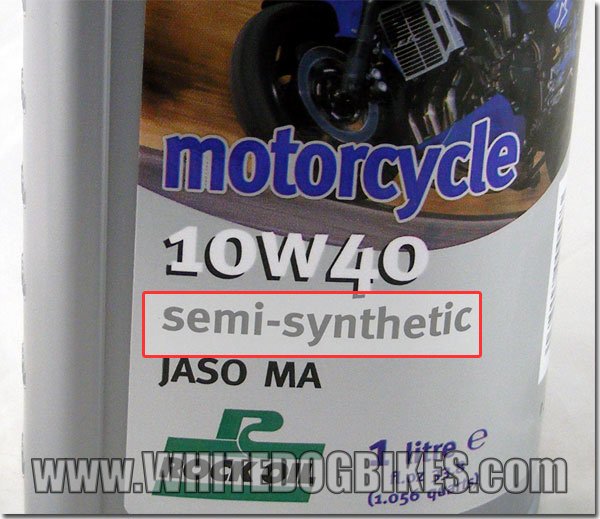
Front view of a bottle of Rock Oil semi-synthetic oil
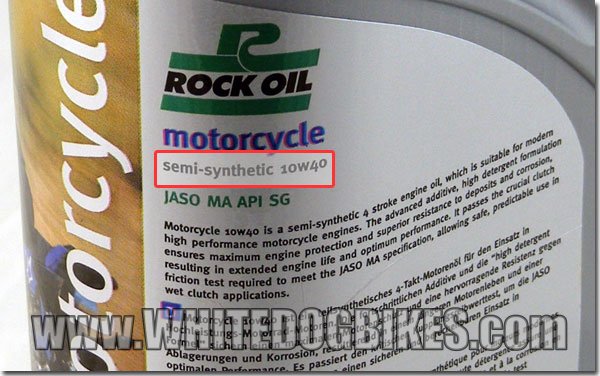
Back view of a bottle of Rock Oil semi-synthetic oil
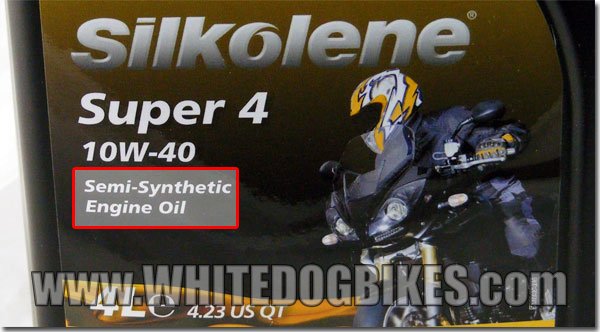
Front view of a bottle of Silkolene semi-synth oil
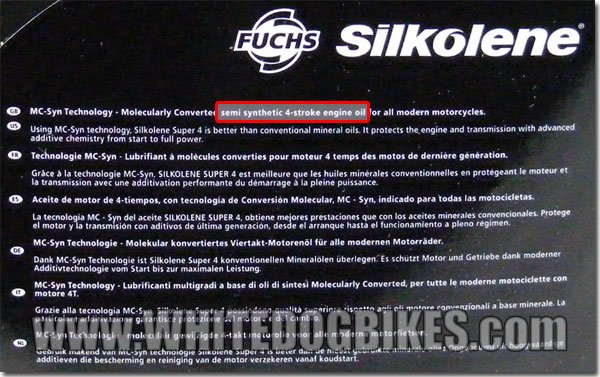
Rear view of a bottle of Silkolene semi-synthetic oil
Synthetic motorcycle oils…..
Synthetic motorbike oils should usually be blended using mostly Group 1 base oils (the highest spec) mixed with some group 3 base oils (the lower spec). Synthetic oil falls between semi and fully synthetic oil, quality wise, and genrally offers good levels of all round engine protection, cleanliness and anti corrosion.
Synthetic oils are suitable for use in nearly all road going bike including tourers, commuters as well as off road bikes and some racing bikes.
Synthetic oils can be used in racing and competition bikes (although you are better off with a fully synth oil!).
How to tell a synthetic motorbike oil from the bottle…
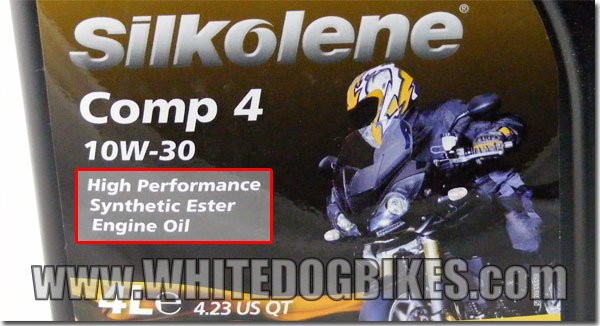
Front view of a bottle of Silkolene synthetic oil
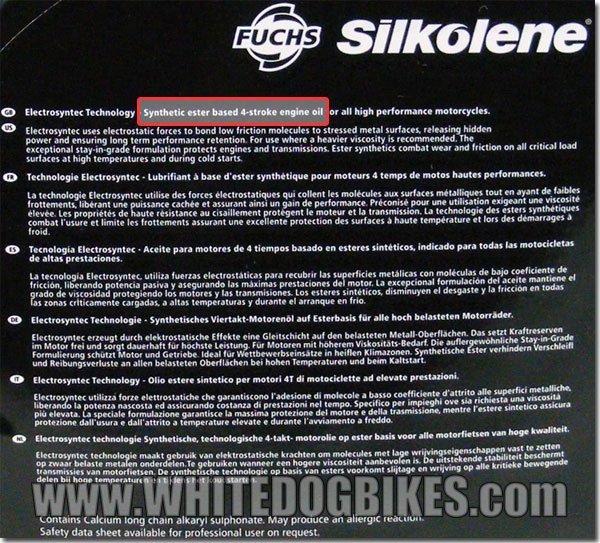
Rear view of a bottle of Silkolene synthetic oil
Fully synthetic motorcycle oils…..
Fully synthetic oils are blended using Group 1 base oils (which are man made, synthetic bases blended from various chemicals). Fully synthetic oils are blended with various different additive packs to obtain the required viscosity (e.g. 10w40) and characteristics.
A ‘proper’ fully synthetic oil gives the best levels of protection for the engine and there should be no noticeable wear in the engine if a full synth oil is used.
Fully synthetic oils are suitable for use in nearly all road going, track and off road motorcycles and scooters and can be used in many modern bikes that run at high operating temperatures whilst having small oil sumps.
Fully synth oils are also suitable for racing and competition use because of the low drag blend (meaning less friction in the engine) and that they offer the best levels of engine protection, cleanliness and anti corrosion.
Because fully synth oils are very good at dealing with heat, they are good for engine that run very hot and engines that don’t have very good cooling systems (like many scooter engines).
How to tell a fully synthetic motorbike oil from the bottle…
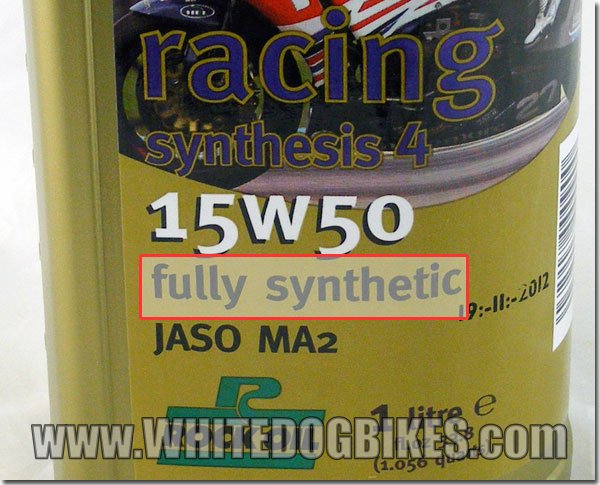
Front view of a bottle of Rock Oil fully synthetic oil
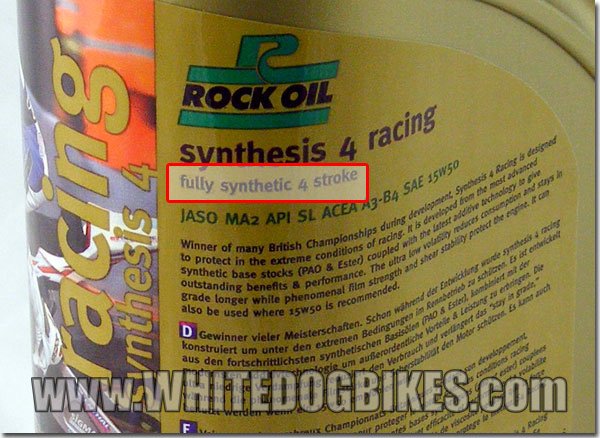
Back view of a bottle of Rock Oil fully synth oil
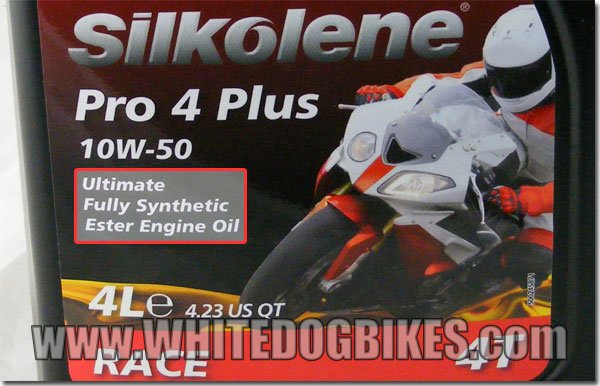
Front view of a bottle of Silkolene full synthetic oil
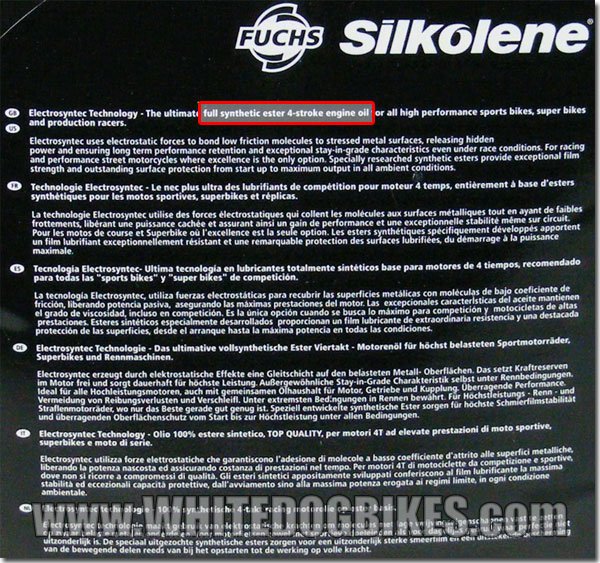
Rear view of a bottle of Silkolene fully synthetic oil
Please remember…..
1) There are no exact formulas or required amounts for the quality and quantity of components used by manufacturers to blend the oils (so not all manufacturers blend using the same standards or quality of ingredients!)
2) The explanations above for motorcycle oil types are meant as a basic guide and have been massively simplified (in reality, oil blending is much more complicated and in depth!)

Leave a Reply